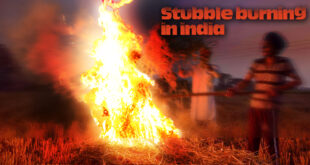Tamil Nadu Tourism Development Corporation Limited (TTDC) plans to allow tourism in the eco-sensitive area surrounding Pakkasuran Malai, a hill near Coonoor.
Ecotourism
Ecotourism is now defined as “responsible travel to natural areas that conserves the environment, sustains the well-being of the local people, and involves interpretation and education”.
Principles of Ecotourism
Ecotourism is about uniting conservation, communities, and sustainable travel. This means that those who implement, participate in and market ecotourism activities should adopt the following ecotourism principles:
- Minimize physical, social, behavioral, and psychological impacts.
- Build environmental and cultural awareness and respect.
- Provide positive experiences for both visitors and hosts.
- Provide direct financial benefits for conservation.
- Generate financial benefits for both local people and private industry.
- Deliver memorable interpretative experiences to visitors that help raise sensitivity to host countries’ political, environmental, and social climates.
- Design, construct and operate low-impact facilities.
- Recognize the rights and spiritual beliefs of the Indigenous People in your community and work in partnership with them to create empowerment.
Droog Fort
- Droog Fort, a historic fort on the peak of Pakkasuran Malai, spread around 40 cents of land. It also plans to construct a viewpoint, a toilet and a food court. The fort and the hill are popular hiking spots.
- It is also an important nesting site for the Shaheen falcon (Falco peregrinus peregrinator).
- The Droog Fort itself has historical, cultural and religious significance, and qualifies as a sacred grove
- Sacred groves are patches of primeval forest that some rural communities protect as abodes of deities. Sacred groves help in the protection of many rare, threatened and endemic species of plants and animals in the area.
Important species found in Droog Fort
- The area, which is composed primarily of rocks and grasslands, is also home to the rare Valeriana leschenaultii, an endemic species of plant that is critically endangered and is threatened by habitat loss due to road construction and expansion of agriculture and human settlements
- Micro-endemic bush frogs such as the Coonoor bush frog (Raorchestes coonoorensis), larger mammals such as the rare Nilgiri martens, mouse deer, Indian gaurs, barking deer, leopards, sloth bears, Indian giant flying squirrels, Indian giant squirrels, brown palm civets and Indian crested porcupines, and a number of endemic orchids and grasses are found in the area.
SOURCE: THE HINDU, PIB
 Chinmaya IAS Academy – Current Affairs Chinmaya IAS Academy – Current Affairs
Chinmaya IAS Academy – Current Affairs Chinmaya IAS Academy – Current Affairs



